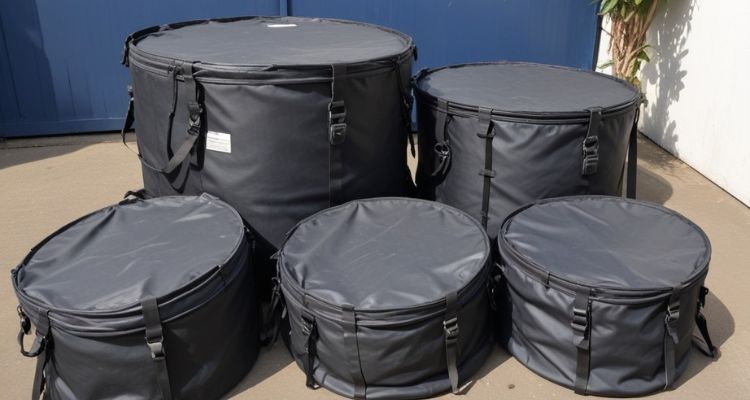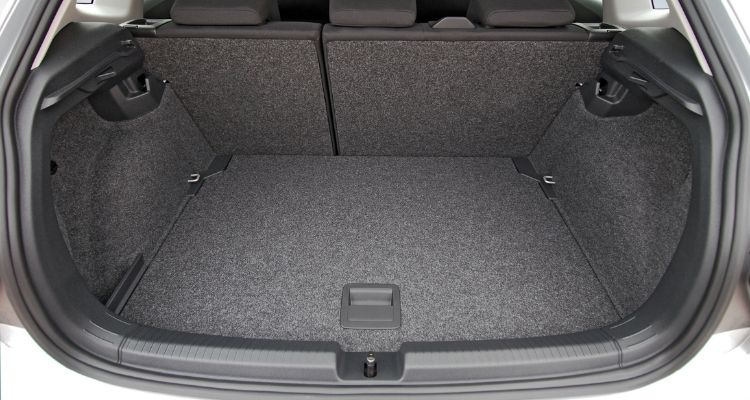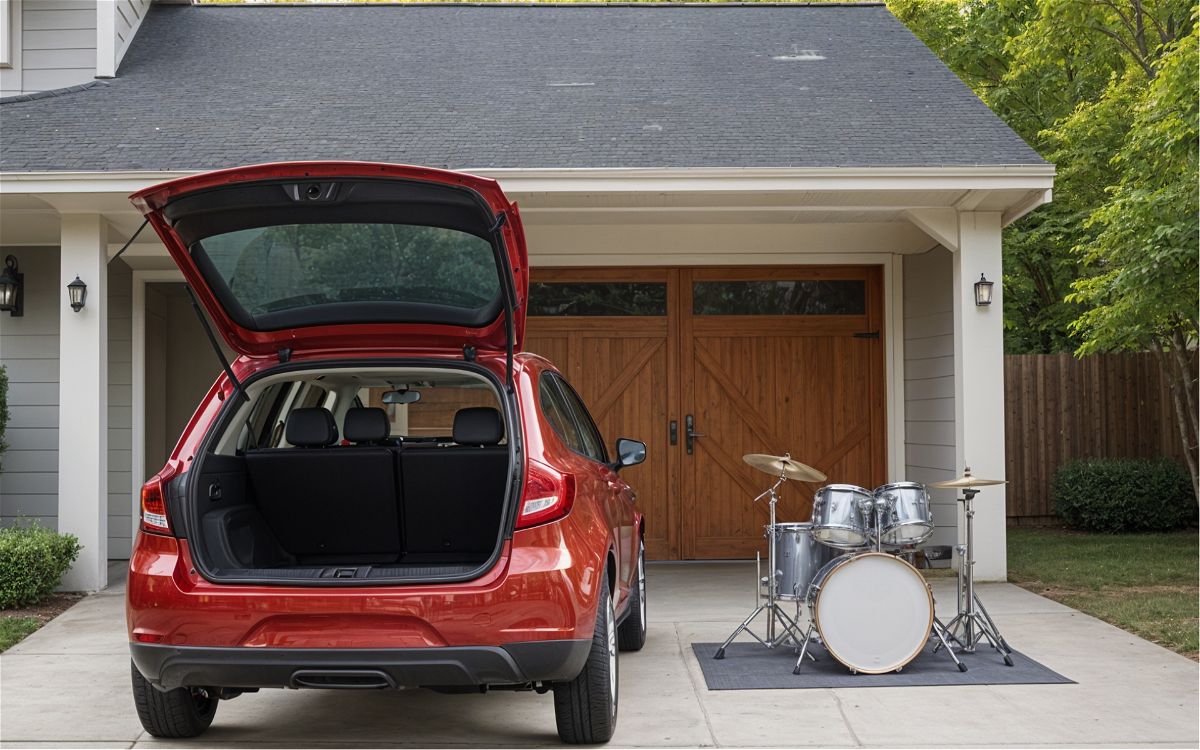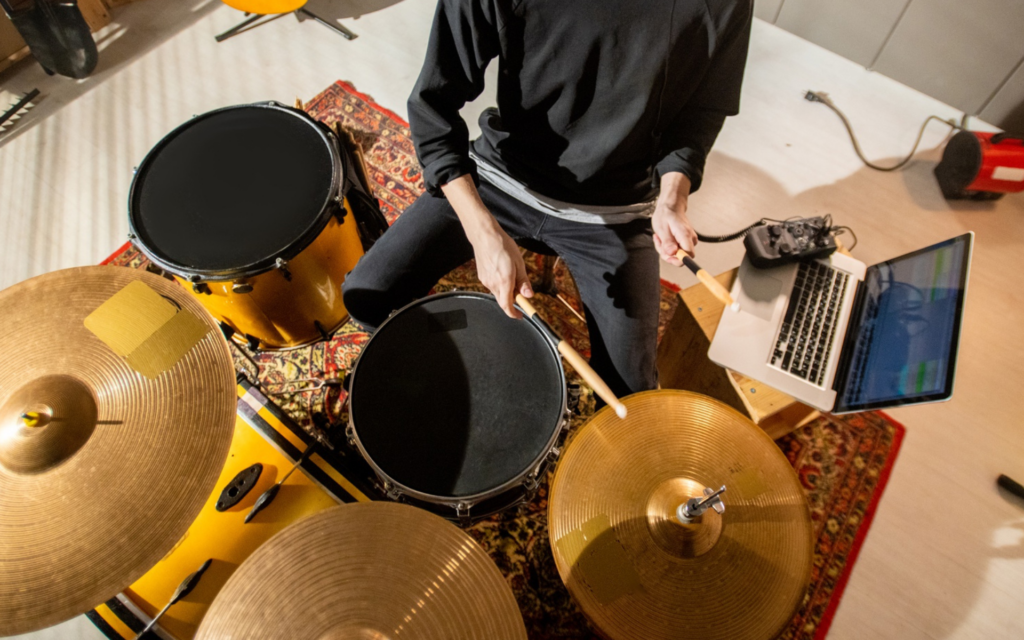While drums are one of the best instruments to play, they’re undoubtedly one of the hardest to transport. I play a lot of live gigs, and I always hope that there’s a house kit available so that I don’t need to go through the transporting process.
With that said, I’ve had to use my own kit more times than I can count, and I’ve learned a few tips and tricks over time.
Here’s everything you need to know about transporting your drums safely and efficiently.
Contents
Drum Bags and Cases

The most important thing you need to have for transporting your drums is a set of drum bags or cases. These protect your drum shells, hardware, and cymbals.
If you don’t use them, your kit is far more likely to get damaged while you move it. I once had a piece of hardware tear a hole through one of my drumheads while driving. That taught me a very valuable lesson about always using cases.
You get two types of cases, though.
Which Type of Cases or Bags Should You Get?
The most common options are soft bags and hard cases. Hard cases provide more sturdy protection. They essentially keep your drum kit a lot safer from whatever environment you’re going to take them through.
However, hard cases make everything heavier, and that makes your kit more difficult to transport. That’s why I wouldn’t outright say that they’re the best option.
If you’re just taking your kit to a venue in your local town, soft cases may be a better option. They’re a lot easier to pack into a car, and they’re lighter to carry.
If you’re doing an extended tour and possibly going on flights, I highly recommend hard cases.
How Many Drum Cases Do You Need?
You just need the exact amount of cases for however many drums you’re planning to transport. If you have a 5-piece drum set, you’ll need five cases for each shell to be packed.
For cymbals, most drummers are fine with just one bag or case. However, you’ll need a heavy-duty case if you want to transport more than five cymbals.
The same concept applies for hardware.
Packing Drums Into a Car

Once you have all of your drums stored in bags or cases, it’s time to put them into a car. Here are the principles that I follow when doing the packing process.
Shells
The bass drum bag is always the first thing I like to pack into the car. It’s the biggest item of the bunch, so packing it first optimizes space. It’s also safer to do this, as the bass drum could cause some damage if it moves around.
If the bass drum doesn’t fit in the trunk, it’s the one drum bag that I’ll place on the back seat. I’ll then place the floor tom bag, as that’s the second biggest.
I’ll then place the toms and snare drum. Always remember to pack everything tightly together so that there isn’t a lot of movement.
Cymbals
Cymbals are a lot more likely to get damaged, so you need to be careful with them. I’ve always found that the safest place for them is behind one of the front car chairs. In other words – the leg room for the backseat.
This stops any of the other bags from making contact with them. However, just be careful about actually leaving cymbals in this position when you’re not in the car. Cymbals are known to be stolen fairly often, so you don’t want them to be visible.
Hardware
The hardware case is always the last thing that I pack. It’s the heaviest case of the bunch, so it works great as a stopper that prevents the other cases from moving during transportation.
Depending on the size of your hardware case, you just need to place it wherever there’s enough space.
My personal packing process has me placing it last. However, you may need to actually start with this if you don’t have a lot of space to work with.
Transporting Drums on an Airplane
Transporting drums on a plane is actually quite easy. You just need to put them all in hard cases and then check them in.
However, the security will open the cases up to check what’s inside. Sometimes, they pull everything out and put it back in themselves.
If you can help it, I’d recommend being part of that process so that you can place everything back inside the correct way. Most security workers aren’t drummers, so they don’t know that your hi-hat rod will get damaged when placed freely amongst the rest of your hardware.
Tips for Traveling with Drums

Remember a Drum Rug
Always remember your drum rug. Without it, your drums are going to move forward while you’re playing the gig. It’s one of the most frustrating things ever.
I’ve been caught too many times without one, so the drum rug is always at the top of my checklist when I’m packing my kit up to take to a gig.
Use Memory Locks
Memory locks are small pieces of metal that you can tighten with a drum key to save the height settings of all your stands.
These things make a world of difference when it comes to setting your drums back up. They allow you to get the same exact setup on stage that you have at home.
This makes you feel more comfortable when you play, improving your experience drastically. If you don’t have them, I’d recommend getting a few to keep on your cymbal stands.
Remember How You Packed Your Kit
My final tip is to remember how you pack your drums and then constantly repeat the process. If you find a way that works, stick to it every time. The more you do it, the faster it will go, and transporting your drums won’t seem as difficult as it was the first time.
Conclusion
The only thing I haven’t mentioned yet is public transport. It’s not ideal to take your drums with you on a train or bus ride, but it might just be something you need to do.
In that case, I’d recommend only packing the essentials. You’d need to have just enough to be able to carry everything at once. Compact kits work best for this, as they’re a lot lighter.
The rest of the principles remain mostly the same. Just make sure that you’re careful when you’re handling everything!









